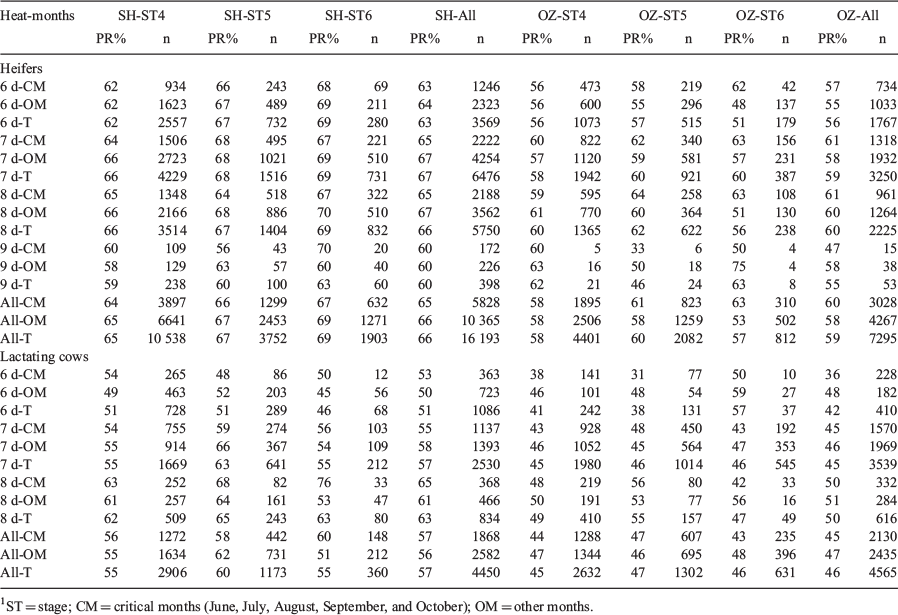11 In vivo-derived embryo pregnancy rates at Maddox Dairy from 2008 to 2018
D. Demetrio A , A. Magalhaes A , M. Oliveira B , R. Santos C and R. Chebel BA Ruann Genetics, Riverdale, CA, USA;
B University of Florida, Gainesville, FL, USA;
C Federal University of Uberlandia, Uberlandia, MG, Brazil
Reproduction, Fertility and Development 32(2) 130-131 https://doi.org/10.1071/RDv32n2Ab11
Published: 2 December 2019
Abstract
Maddox Dairy, located in Riverdale, CA, USA, is a Holstein herd that milks 3500 cows with a 305-day mature-equivalent milk production of 12 800 kg, and they have been producing high genetic animals by embryo transfer (ET) since the early 1980s. In vivo-derived embryos from Holstein donors were transferred fresh (grade 1 or 2) or frozen (grade 1), at morula (4), early blastocyst (5), or blastocyst (6) stage, to virgin heifers (VH, natural oestrus, 13-15 months old) or lactating cows (LC, Presynch-Ovsynch, 86 days in milk, first or second lactation) 6 to 9 days after oestrus. Pregnancy diagnosis was done by transrectal ultrasonography at 32-46 days in VH and by the IDEXX PAG test at 30 days in LC. June, July, August, September, and October were called critical months (first service AI conception rate drops below 44%) and compared with the other months. The data from 32 503 ETs between January 2008 and December 2018 are summarised on Table 1. Pregnancy rates (PR) are lower for LC recipients than for VH. Embryo transfers performed 7 or 8 days after oestrus had higher PR in both types of recipients and embryos, but Day 6 and 9 oestrus are also used with fair results. The season does not seem to affect PR. There is not enough difference in the combination of stage and days from oestrus for in vivo-derived embryos. These numbers do not belong to a planned experiment. Several management changes during the years were made, which make it very difficult to apply statistical methods to analyse the data correctly. They are used as a tool to make decisions in an attempt to improve future results.

|


